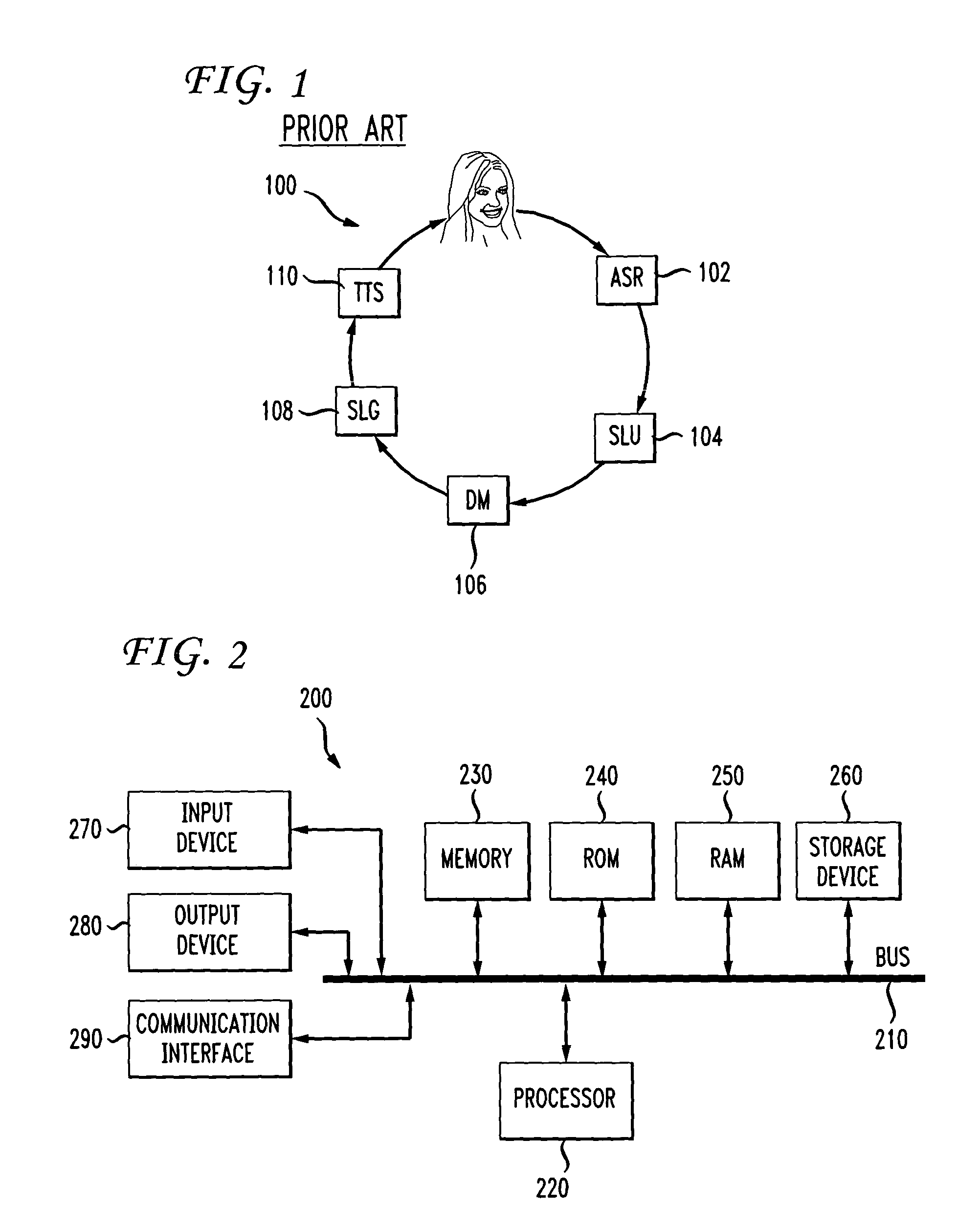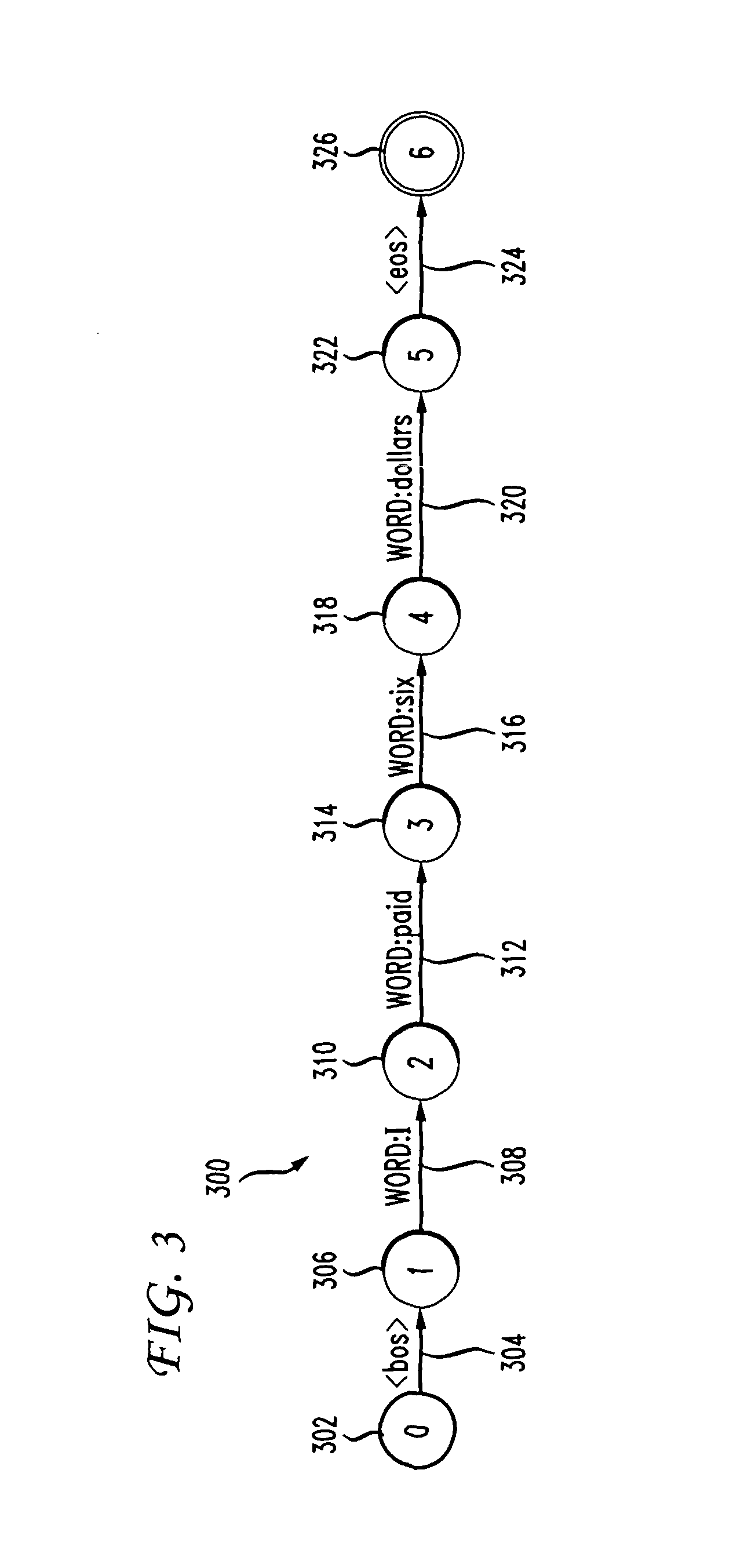System and method for using semantic and syntactic graphs for utterance classification
a semantic and syntactic graph and classification system technology, applied in the field of spoken dialog systems, can solve the problems of data sparsity and difficult classification of such user utterances by statistical methods, and achieve the effect of improving spoken language understanding and improving system accuracy
- Summary
- Abstract
- Description
- Claims
- Application Information
AI Technical Summary
Benefits of technology
Problems solved by technology
Method used
Image
Examples
Embodiment Construction
[0023]Various embodiments of the invention are discussed in detail below. While specific implementations are discussed, it should be understood that this is done for illustration purposes only. A person skilled in the relevant art will recognize that other components and configurations may be used without parting from the spirit and scope of the invention.
[0024]Spoken dialog systems aim to identify human intent expressed in natural language, take actions accordingly and to satisfy their requests. FIG. 1 is a functional block diagram of an exemplary natural language spoken dialog system 100. Natural language spoken dialog system 100 may include an automatic speech recognition (ASR) module 102, a spoken language understanding (SLU) module 104, a dialog management (DM) module 106, a spoken language generation (SLG) module 108 and a text-to-speech (TTS) module 110.
[0025]ASR module 102 may analyze speech input and may provide a transcription of the speech input as output. SLU module 104 ...
PUM
 Login to View More
Login to View More Abstract
Description
Claims
Application Information
 Login to View More
Login to View More - R&D
- Intellectual Property
- Life Sciences
- Materials
- Tech Scout
- Unparalleled Data Quality
- Higher Quality Content
- 60% Fewer Hallucinations
Browse by: Latest US Patents, China's latest patents, Technical Efficacy Thesaurus, Application Domain, Technology Topic, Popular Technical Reports.
© 2025 PatSnap. All rights reserved.Legal|Privacy policy|Modern Slavery Act Transparency Statement|Sitemap|About US| Contact US: help@patsnap.com



